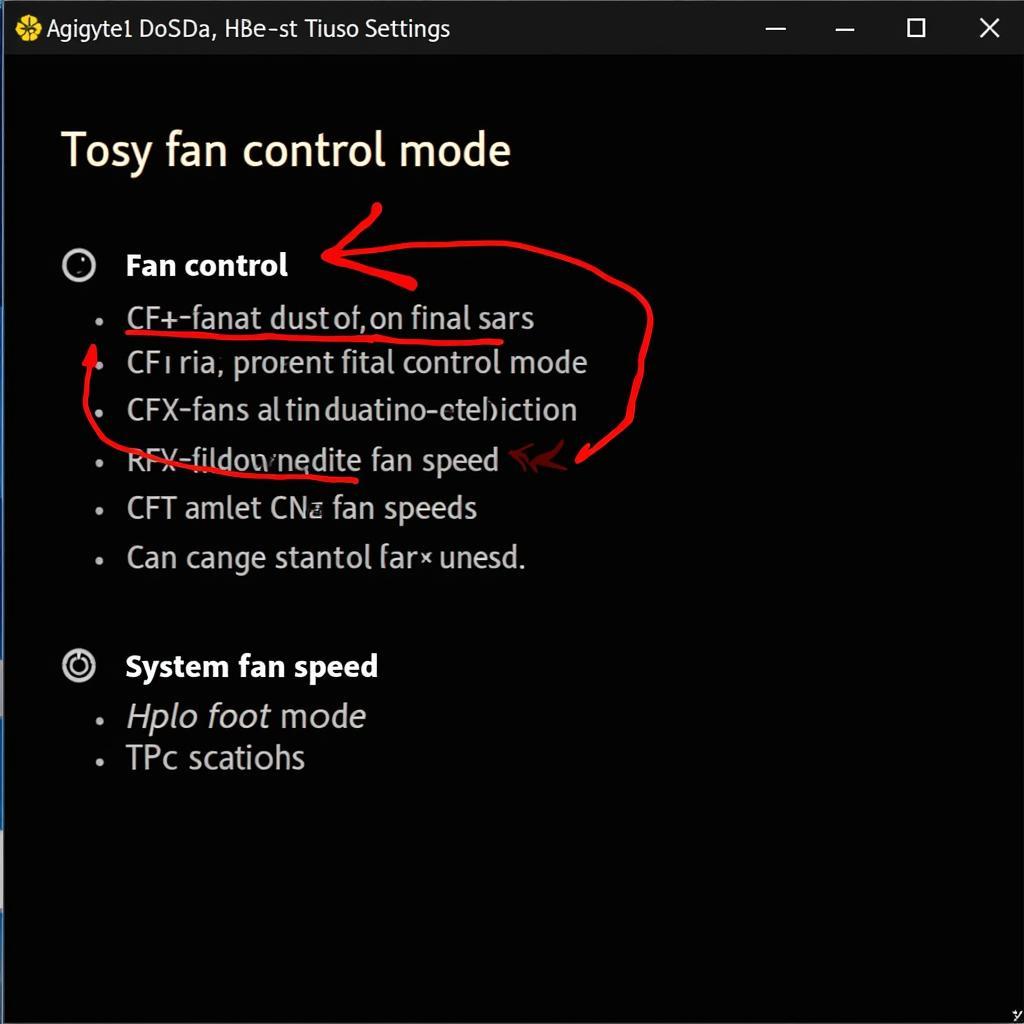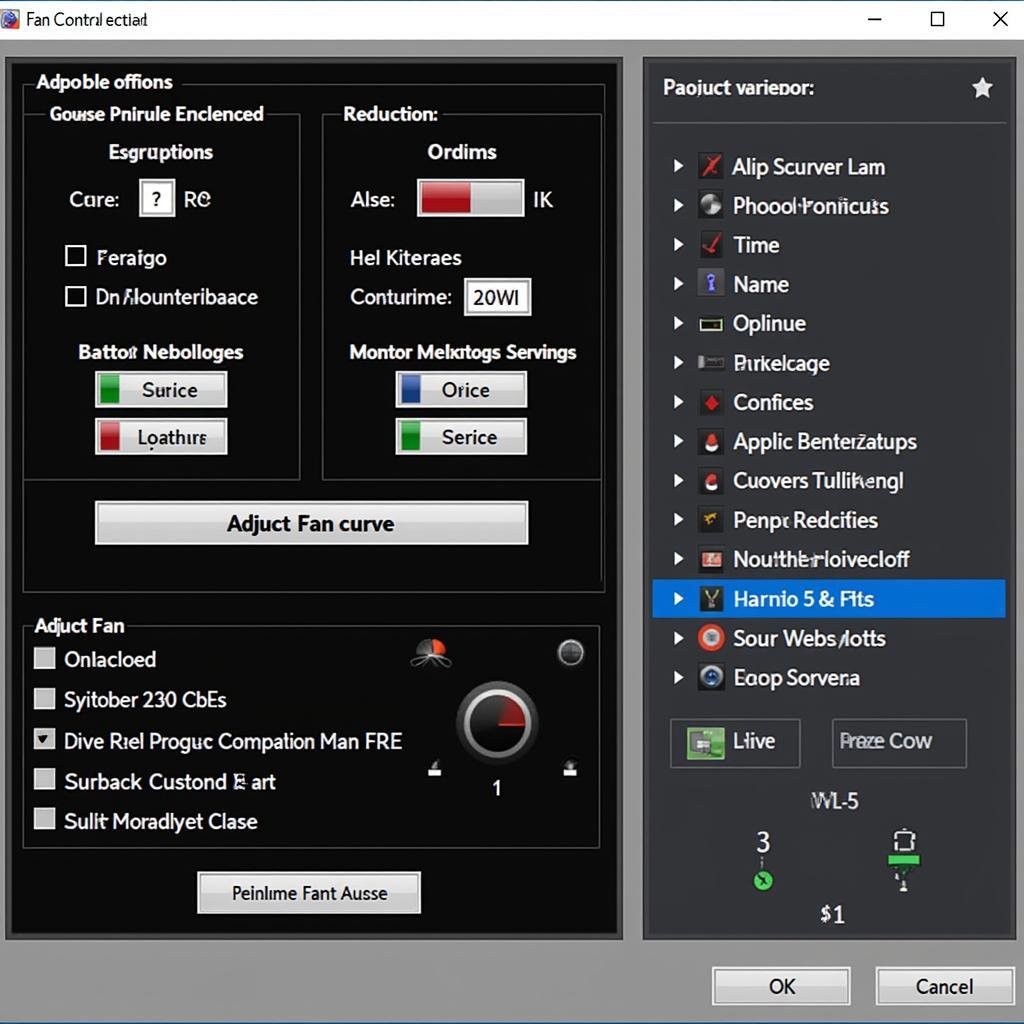The Gigabyte H81M-S1 motherboard is a popular choice for budget-conscious PC builders. It offers a solid set of features, including support for Intel’s 4th generation processors. However, one area where the H81M-S1 can be lacking is in its fan control options. The BIOS offers limited control over fan speeds, which can lead to your system running louder than necessary.
Fortunately, there are ways to improve the fan speed control on your Gigabyte H81M-S1. By using a combination of software utilities and hardware tweaks, you can fine-tune your fan curves for optimal cooling and noise levels.
Understanding Fan Speed Control
Before we dive into the specifics of the Gigabyte H81M-S1, let’s first understand the basics of fan speed control. In essence, fan speed control allows you to adjust the rotational speed of your case fans and CPU cooler in response to system temperatures.
Why is this important? Because a well-configured fan curve ensures that your components stay cool under load while minimizing noise when the system is idle.
Gigabyte H81M-S1: Fan Control Options
The Gigabyte H81M-S1 motherboard provides a few basic fan control options within its BIOS.
- Fan Speed Control Mode: You can usually choose between different pre-set modes like “Normal,” “Silent,” or “Performance.” These modes offer varying levels of fan speed aggression.
- CPU Fan Speed Control: This setting allows you to adjust the fan curve for your CPU cooler. You can typically set temperature thresholds and corresponding fan speeds.
- System Fan Speed Control: Similar to CPU fan control, this setting applies to the case fans connected to your motherboard.
 Gigabyte H81M-S1 BIOS fan control settings
Gigabyte H81M-S1 BIOS fan control settings
However, the BIOS options are often limited in terms of granularity and customization. This is where third-party software utilities can prove invaluable.
Third-Party Software for Enhanced Control
Several software utilities offer more comprehensive fan control options for your Gigabyte H81M-S1 motherboard. These utilities typically interface directly with your motherboard’s sensors and allow for more precise adjustments.
- SpeedFan: A popular and free option, SpeedFan, provides detailed monitoring of system temperatures, voltages, and fan speeds. It allows you to create custom fan curves based on various temperature sensors.
- Argus Monitor: A paid alternative, Argus Monitor, offers a user-friendly interface and advanced features like fan control based on hard drive temperatures and GPU temperature monitoring.
- AI Suite 3: If you’re using a Gigabyte graphics card alongside your H81M-S1 motherboard, Gigabyte’s AI Suite 3 software provides a centralized platform for system monitoring and fan control.
 Third-party fan control software interface
Third-party fan control software interface
These are just a few examples, and many other capable fan control utilities are available. Experimenting with different options can help you find the software that best suits your needs and preferences.
Tips for Optimizing Fan Speeds
Here are some general tips for optimizing fan speeds on your Gigabyte H81M-S1 system:
- Start with BIOS Settings: Before diving into third-party software, explore the fan control options within your BIOS. Set a baseline configuration that provides reasonable cooling without excessive noise.
- Monitor Temperatures: Use monitoring software to observe your CPU and system temperatures under various loads. This will give you a better understanding of your cooling needs.
- Gradual Adjustments: When creating custom fan curves, make incremental changes and test the results. Aim for a balance between cooling performance and noise levels.
- Consider Case Airflow: Remember that fan control is only one aspect of effective cooling. Ensure your case has good airflow by properly positioning intake and exhaust fans.
Conclusion
While the Gigabyte H81M-S1 motherboard may not boast the most advanced fan control features, with a bit of effort, you can still achieve a quiet and cool-running system. By leveraging the BIOS settings and third-party software, you gain greater control over your fan speeds, allowing you to strike the perfect balance between performance and acoustics.
FAQs
1. Can I control the speed of fans connected to the chassis fan headers on my Gigabyte H81M-S1?
Yes, you can typically control the speed of fans connected to the chassis fan headers through the BIOS or third-party fan control software.
2. My CPU fan is always running at full speed, even when the system is idle. What should I do?
Check the fan header settings in the BIOS to ensure it’s not set to “Full Speed” mode. You might also need to adjust the CPU fan curve for a more gradual increase in speed.
3. Is it safe to use third-party fan control software?
Generally, yes, using reputable fan control software is safe. However, it’s essential to download software from trusted sources and avoid making extreme adjustments that could potentially harm your hardware.
4. I’m still experiencing high temperatures even after adjusting fan speeds. What else can I do?
Ensure your CPU cooler is installed correctly and that the thermal paste is applied evenly. Consider re-applying thermal paste if your cooler is old or has been removed and re-installed multiple times. You might also need to invest in a more robust CPU cooler if you’re consistently pushing your system to its limits.
5. Can I set different fan curves for different scenarios, like gaming vs. general use?
Yes, many fan control utilities allow you to create and save multiple fan profiles. You can switch between these profiles depending on your usage scenario.


